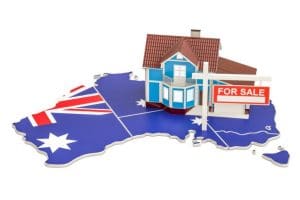Demographics drives our property markets.
In fact over the long term, demographics is more important to what happens to property than short term influences like interest rates or consumer confidence.
So let’s look at some of the latest ABS demographic data, which was recently released for the period up to June 30th last year.
Estimated resident population: 
- The preliminary estimated resident population (ERP) of Australia at 30 June 2016 was 24,127,200 people. This is an increase of 337,800 people since 30 June 2015, and 78,600 people since 31 March 2016.
- The preliminary estimate of natural increase for the year ended 30 June 2016 (155,700 people) was 2.6%, or 3,900 people higher than the natural increase recorded for the year ended 30 June 2015 (151,800 people).
- The preliminary estimate of net overseas migration (NOM) for the year ended 30 June 2016 (182,200 people) was 3.0%, or 5,300 people higher than the net overseas migration recorded for the year ended 30 June 2015 (176,900 people).
Population growth by state and territory in 2015-16

Source: ABS
Population growth rates
- Australia’s population grew by 1.4% during the year ended 30 June 2016.
- Natural increase and NOM contributed 46.1% and 53.9% respectively to total population growth for the year ended 30 June 2016.
- All states and territories recorded positive population growth in the year ended 30 June 2016.
- Victoria recorded the highest growth rate of all states and territories at 2.1%. The Northern Territory recorded the lowest growth rate at 0.2%.

Source ABS and id.com
Components of population growth
The growth of Australia’s population has two components:
- natural increase (the number of births minus the number of deaths) and
- net overseas migration (NOM).
The contribution to population growth for the year ended 30 June 2016 was higher from NOM (53.9%) than from natural increase (46.1%).

Natural Increase
The preliminary estimate of natural increase for the year ended 30 June 2016 was 155,700 people, an increase of 2.6%, or 3,900 people, compared with natural increase for the year ended 30 June 2015 (151,800 people).
Births
The preliminary estimate of births for the year ended 30 June 2016 (315,500 births) increased by 7,900 births from the year ended 30 June 2015 (307,700 births).
Deaths
The preliminary estimate of deaths for the year ended 30 June 2016 (159,900 deaths) increased by 4,000 deaths from the year ended 30 June 2015 (155,900 deaths).
Net Overseas Migration
For the year ended 30 June 2016, Australia’s preliminary net overseas migration (NOM) estimate was 182,200 people.
This was 3.0% (5,300 people) higher than the net overseas migration estimated for the year ended 30 June 2015 (176,900 people).
NOM arrivals increased by 2.5% (11,700 people) between the years ended 30 June 2015 (471,000 people) and 30 June 2016 (482,700 people).
NOM departures increased by 2.2% (6,400 people) between the years ended 30 June 2015 (294,100 people) and 30 June 2016 (300,500 people).
The preliminary NOM estimate for the June quarter 2016 (31,400 people) was 4.4% (1,300 people) higher than the estimate for the June quarter 2015 (30,000 people).
How do we compare with the rest of the world?
For the 12 months ended 30 June 2016, Australia’s population growth rate of 1.4% was above that of the world at 1.2%.
Australia is growing at a faster rate that New Zealand and the United States of America (both 0.7%0, the United Kingdom (0.6%) and Canada (1.0%).
Some countries that experienced faster growth than Australia were the Philippines (1.6%), Singapore (1.8%) and Papua New Guinea (2.1%).
According to figures from the United Nations, Department of Economics and Social Affairs, Australia’s population ranked 53rd highest in the world in 2015 (decreasing from 52nd in 2014) and is projected to rank 61st by 2050.
By 2050, India is projected to have displaced China as the most populous country with 1.7 billion people compared with 1.35 billion in China.
|
POPULATION, GROWTH RATE AND RANK – Summary(a)
|
||||||
|
|
||||||
|
ESTIMATED RESIDENT POPULATION
|
PROJECTED POPULATION
|
RANK
|
||||
|
2014(b)
|
2015(b)
|
Growth Rate
|
2050
|
2015
|
2050
|
|
| Selected Countries |
million
|
million
|
%
|
million
|
no.
|
no.
|
|
|
||||||
| Australia |
24
|
24
|
1.4
|
38
|
53
|
61
|
| Canada |
36
|
36
|
1.0
|
44
|
38
|
47
|
| China (excl. SARs and Taiwan) |
1 369
|
1 376
|
0.5
|
1 348
|
1
|
2
|
| France |
64
|
64
|
0.4
|
71
|
22
|
27
|
| Greece |
11
|
11
|
-0.4
|
10
|
81
|
102
|
| Hong Kong (SAR of China) |
7
|
7
|
0.8
|
8
|
103
|
111
|
| India |
1 295
|
1 311
|
1.2
|
1 705
|
2
|
1
|
| Indonesia |
254
|
258
|
1.2
|
322
|
4
|
5
|
| Italy |
60
|
60
|
–
|
57
|
23
|
33
|
| Japan |
127
|
127
|
-0.2
|
107
|
11
|
17
|
| Korea (South) |
50
|
50
|
0.4
|
51
|
27
|
39
|
| Malaysia |
30
|
30
|
1.4
|
41
|
44
|
54
|
| New Zealand |
5
|
5
|
0.7
|
6
|
125
|
127
|
| Papua New Guinea |
7
|
8
|
2.1
|
13
|
100
|
85
|
| Philippines |
99
|
101
|
1.6
|
148
|
12
|
13
|
| Singapore |
6
|
6
|
1.8
|
7
|
114
|
116
|
| South Africa |
54
|
54
|
1.0
|
66
|
24
|
29
|
| Sweden |
10
|
10
|
0.8
|
12
|
90
|
90
|
| United Kingdom |
64
|
65
|
0.6
|
75
|
21
|
24
|
| United States of America |
319
|
322
|
0.7
|
389
|
3
|
4
|
| Viet Nam |
92
|
93
|
1.1
|
113
|
14
|
16
|
| World |
7 266
|
7 349
|
1.2
|
9 725
|
–
|
–
|
|
|
||||||
| Source: A.B.S | ||||||
- 8 Charts explaining why we’re in for a great time in property in 2021 - January 5, 2021
- New data shows COVID-19’s impact on Australians’ personal finances, including debt and insurance - December 21, 2020
- 4 key reasons why the property pessimists are changing their minds - October 12, 2020









